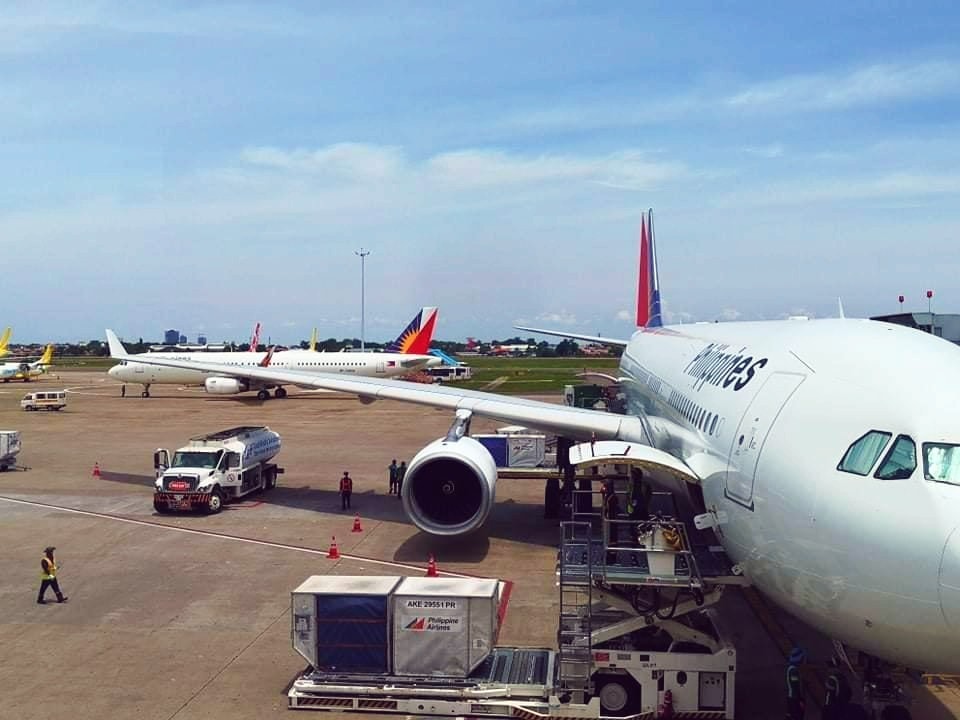When Philippine Airlines (PAL) announced its order for nine (9) Airbus A350-1000 jets at the Paris Air Show 2023, there was some skepticism regarding the decision to have a 10-abreast economy class configuration (based on a report from FlightGlobal) on the new aircraft.
To fully comprehend the implications of this change, it is crucial to examine the advantages, potential drawbacks, and the impact on travel experience and ticket prices. The implementation of a 10-abreast economy class configuration on the Airbus A350-1000 presents both benefits and concerns.
It is essential to understand the steps taken by Airbus to make this configuration possible. Last year, the European aircraft manufacturer introduced modifications to its A350s, allowing for increased cabin space and the installation of 10-abreast economy class seats with minimal impact on passenger comfort. This was achieved by reducing the sidewalls of the A350, resulting in an additional four inches of cabin area.

Consequently, the A350-1000 can now accommodate 17-inch-wide economy class seats in a 3-4-3 configuration. The increased seating capacity offers the potential for enhanced efficiency, enabling PAL to transport more passengers per flight and potentially reducing congestion at busy airports, especially at the crowded Ninoy Aquino International Airport.
Nevertheless, concerns have been raised about passenger comfort. The 10-abreast economy class configuration poses potential drawbacks, such as reduced personal space and limited mobility within the cabin. However, it is crucial to consider these potential issues alongside the benefits of increased capacity and improved cabin offerings.
While the impact on comfort is yet to be experienced firsthand, Airbus claims to have taken measures to minimize any negative effects on passengers. The success of this configuration ultimately relies on how well the redesigned cabin can balance comfort and space optimization. Personal experiences on the A350-1000 will play a crucial role in determining the true extent of its impact on passenger comfort.
On the other hand, the installation of a 10-abreast economy class configuration could significantly enhance the travel experience for passengers. With more seats available, there is a possibility of increased availability of affordable fares, making air travel more accessible to a broader range of travelers.
Furthermore, the additional cabin space created by this configuration presents an opportunity for PAL to improve its premium economy and business class offerings. Passengers in these sections can anticipate better amenities, increased legroom, and an overall more comfortable journey.
The denser cabin layout also has potential implications for the airline’s ticket prices. The increased seating capacity allows for more efficient use of the aircraft, potentially reducing operational costs per passenger. These cost savings may be passed on to customers in the form of more competitive fares.
Consequently, passengers may have the chance to enjoy more affordable flights without compromising on the overall travel experience. However, it is important to note that pricing decisions made by the airline will ultimately be influenced by various factors, including market demand and competition.
Ultimately, the true assessment of the 10-abreast economy class configuration on the A350-1000 can only be made through personal experience. We eagerly await the unveiling of the cabin design and the seat maker chosen by PAL. In the meantime, we can only speculate about the impact of this new configuration on passenger comfort.
While the reaction of passengers to this new configuration remains to be seen, it has the potential to offer both advantages and disadvantages. Only time will reveal how this new configuration will impact the travel experience.
With an optimistic outlook, we anticipate exploring the benefits that the A350-1000 brings to PAL and its passengers, ultimately shaping a more efficient and enjoyable travel experience.
























Leave a comment